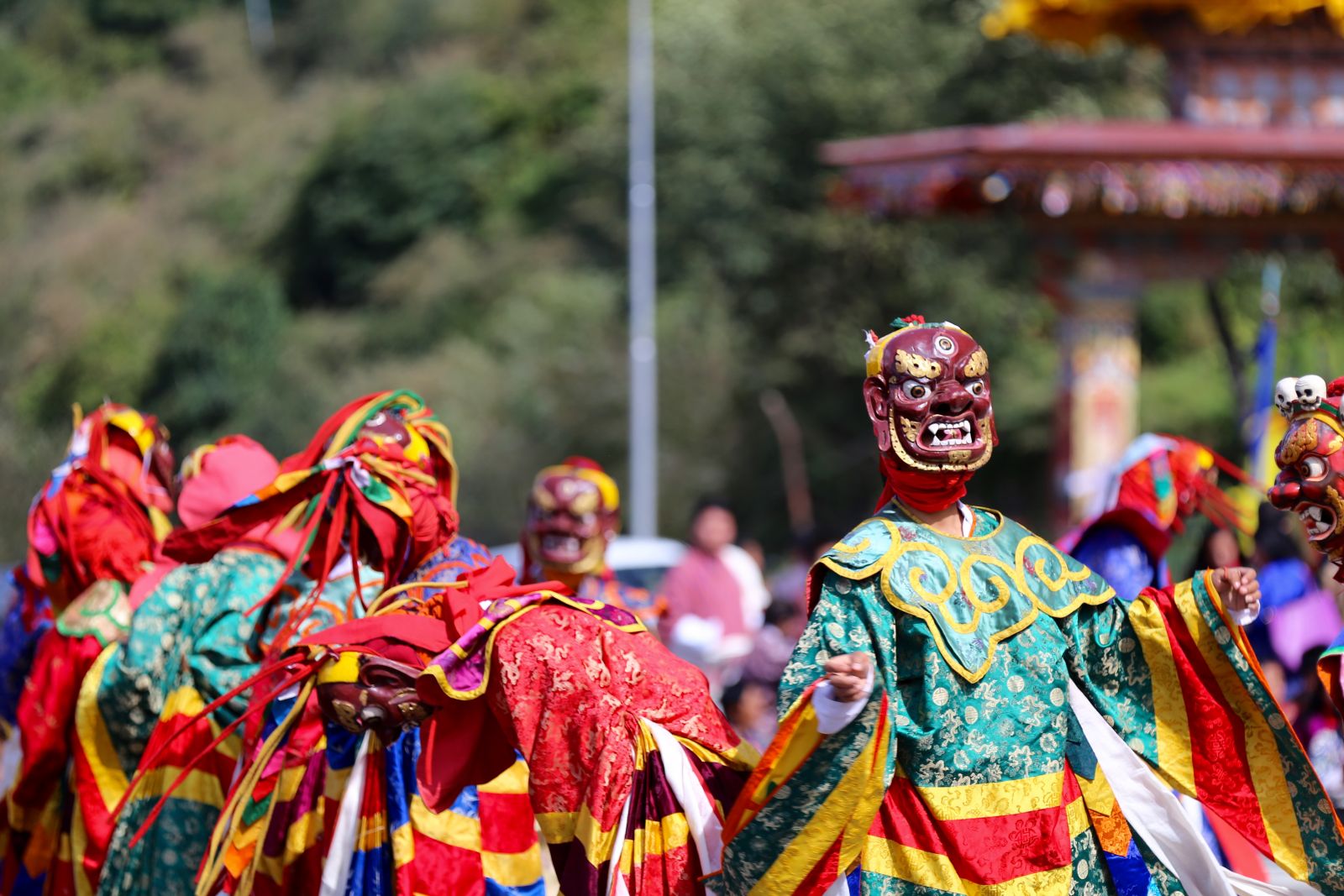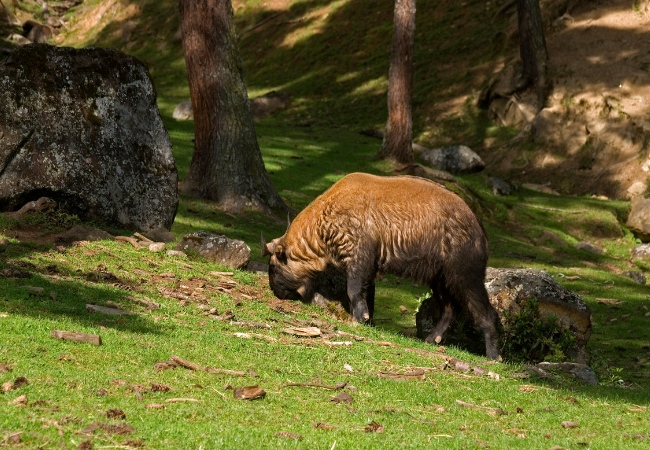Places to visit in Thimphu
PLAN YOUR TRIP
.jpg)

Thimphu is the capital and largest city of Bhutan, located in the western central part of the country. It is the political and economic center of Bhutan.
Thimphu is home to a variety of government offices, businesses, and institutions, as well as numerous cultural and religious sites. The city is known for its vibrant nightlife and vibrant cultural scene, with numerous festivals and events taking place throughout the year. Additionally, Thimphu is known for its unique architectural style, which combines traditional Bhutanese design with modern elements.

Tashichho Dzong,
- Tashichho Dzong, also known as the "Fortress of the Glorious Religion", is a grand fortress and Buddhist monastery located on the northern edge of the city of Thimphu, the capital of Bhutan. It serves as a seat of Bhutan's government and the monastic body of the country's central monk body, the dratshang.
The Dzong is a striking example of traditional Bhutanese architecture, with its white-washed walls, red roofs, and large golden-topped towers, and is one of the most iconic landmarks of Bhutan. It houses several important religious relics and sacred images, including the big statue of Buddha in the main prayer hall.
Tashichho Dzong is open to visitors only after 5 pm during the office hours and after 9 am during holidays and weekends. Visitors are welcome to explore the stunning courtyards, intricate frescoes, and beautiful gardens that surround the fortress. The Dzong is also the site of several major festivals and events throughout the year, including the Thimphu Tshechu, one of the largest religious festivals in Bhutan.

Memorial Chorten
- Also known as the Thimphu Chorten, is a stupa located in the heart of Thimphu. It was built in 1974 to honor the third king of Bhutan, Jigme Dorji Wangchuck, and to serve as a monument to peace and prosperity.
The chorten is a large white structure with a golden spire on top, surrounded by prayer wheels. Inside, there are several shrines and statues dedicated to different deities, including Guru Rinpoche and Chenrezig.
The chorten is an important religious site and a popular destination for locals and tourists alike. People come to circumambulate the chorten, spinning the prayer wheels and chanting mantras as they walk. It is especially busy during auspicious days when people come to offer prayers and offerings.
The National Memorial Chorten is not just a religious site, but also a symbol of Bhutan's unique cultural heritage and commitment to peace and prosperity. It is a must-visit destination for anyone traveling to Thimphu.

Buddha Dordenma
- Buddha Dordenma is a massive statue of Lord Buddha overlooking Thimphu valley. It is one of the tallest Buddha statues in the world, standing at a height of 169 feet (51.5 meters) and made of bronze and gilded in gold. The statue is located atop a hill overlooking the southern entrance to Thimphu valley and offers a panoramic view of the entire city.
The construction of the statue began in 2006 and was completed in 2015. The project was undertaken to commemorate the 60th birth anniversary of Jigme Singye Wangchuck, the fourth king of Bhutan. The statue houses more than 100,000 smaller Buddha statues inside and is surrounded by a beautiful garden and meditation hall.
Visitors can climb up to the statue's base to take a closer look and admire the intricate design and detailing. The statue is also illuminated at night, making it a breathtaking sight to behold. In addition, visitors can also explore the nearby Kuensel Phodrang Nature Park and enjoy the scenic views of Thimphu valley.

Changangkha Lhakhang
- It is a 12th-century temple and is one of the oldest and most revered temples in Bhutan, and it is a popular destination for both locals and tourists.
The temple is located on a ridge overlooking the city, and it offers stunning views of the surrounding mountains and valleys. The main shrine room houses a statue of Chenrezig, the bodhisattva of compassion, and other deities.
The temple is an important religious and cultural center in Thimphu, and it is a popular destination for Bhutanese families who come to seek blessings for their newborn children.

Motithang Takin Preserve
- Located at Motithang, the preserve is home to the national animal of Bhutan, the takin, which is a unique and rare species of goat-antelope. The preserve spans across an area of 8.4 hectares and is surrounded by lush forests, making it an ideal location for the takins to roam freely.
The preserve was established in 1976 by the third king of Bhutan, Jigme Dorji Wangchuck, in an effort to conserve and protect the takin species, which is considered to be one of the most endangered species in the world. Visitors can observe the takins in their natural habitat from a safe distance, and learn about their behavior and habits.
In addition to the takins, the preserve is also home to other wildlife such as barking deer, sambar etc. The Motithang Takin Preserve is a popular tourist attraction in Thimphu, and is a must-visit destination for nature enthusiasts and wildlife lovers.

The Royal Textile Academy
- It is a museum and school, dedicating to preserve and promote Bhutanese textiles. It was founded in 2005 under the patronage of Her Majesty Gyalyum (Queen Mother) Sangay Choden Wangchuck.
The museum features exhibits showcasing Bhutanese textiles, including kiras, ghos, and other traditional clothing worn by Bhutanese people. Visitors can learn about the history and significance of Bhutanese textiles and observe the intricate process of textile weaving and dyeing.
In addition to the museum, the Royal Textile Academy also functions as a school, offering vocational training in textile weaving, design, and entrepreneurship. The academy aims to provide Bhutanese youth with skills and knowledge to continue the tradition of textile weaving and create economic opportunities for themselves and their communities.

Weekend Market
- It is one of the most popular attractions in the capital city of Bhutan. The market is held every Friday, Saturday, and Sunday, and it offers a wide variety of local produce, handicrafts, and souvenirs. The market is located in the heart of Thimphu and is a great place to experience the local culture and interact with the people.
The market is famous for its fresh fruits, vegetables and local handicrafts from all over the country.
This weekend Market is also a popular gathering place for locals and tourists alike. It's a great place to people-watch and immerse oneself in the vibrant culture of Bhutan.

Dechen Phodrang Monastery
-
Meaning 'Place of Great Bliss', is situated in a valley 4km away from the main town and offers a stunning view of Thimphu city. This two-storeyed structure houses several ancient paintings, including a central ordinance by the Bearded Lama or Zhabdrung Ngawang Namgyal, which are a sight to behold. The paintings date back to the 12th century, making them extremely ancient. In 1971, the monastery was transformed into a monastic school or Lobra for teachings and preaching, and during breaks, young monks may ask you many questions. The main chapel features stunning murals from the authentic 13th century, leaving viewers charmed by their precision and exactness. The upper section of the main building features a large sculpture of the Zhabdrung Ngawang Namgyal, and there is also a chapel devoted to the protective deities called Goenkhang.

Folk Heritage Museum
- Located in the outskirts of Thimphu and is an excellent place to explore Bhutanese culture, traditions, and way of life. The museum has been designed to replicate a typical rural Bhutanese home, which offers a glimpse into the daily lives of Bhutanese people.
Inside the museum, you can see a collection of traditional household items, tools, and artifacts that were used in the past, such as old kitchen utensils, farming equipment, and textiles. The museum also has a beautifully landscaped garden where you can see a variety of Bhutanese plants and crops.
One of the highlights of the museum is the live demonstrations of traditional Bhutanese arts and crafts, such as weaving, pottery, and paper making. You can also try your hand at these crafts and take home a souvenir.

Dochula Pass
- Located approximately 30 kilometers away from Thimphu, Dochula Pass is a famous tourist spot that offers stunning panoramic views of the Himalayan mountain range. The pass is located at an altitude of 3,100 meters and is surrounded by colorful prayer flags fluttering in the wind. It is also home to 108 chortens or stupas built in memory of Bhutanese soldiers who lost their lives in a 2003 military operation. In addition to the breathtaking views and the chortens, Dochula Pass is also a popular spot for hiking, picnics, and exploring the nearby temple and monastery. During the winter months, visitors can also witness the snow-capped peaks of the Himalayas, making it a popular destination year-round.

Phajoding Monastery
- The monastery located in the mountains above Thimphu city. It was founded in the 13th century and has served as an important religious center for centuries. The monastery is perched at an altitude of about 3,600 meters and offers a panoramic view of the Thimphu valley.
Phajoding Monastery is known for its serene and peaceful atmosphere, making it a popular destination for meditation and retreat. Visitors can hike up to the monastery, which takes about three to four hours from Thimphu. Along the way, visitors can enjoy the beautiful scenery and beautiful nature.
The monastery complex has several buildings, including prayer halls, meditation rooms, and living quarters for the monks. Visitors can explore the complex and observe the monks as they go about their daily routines of prayer and study.

Tango Monastery
- In Bhutanese language, the name ‘Tango’ signifies ‘horse head’ and is associated with the deity Hayagrive, also known as Tandin, who is enshrined in the monastery. A scenic hike of around 14km to the north of Thimphu, close to Cheri Mountain and the Cheri Monastery, Tango Goemba is steeped in religious significance dating back to the 12th century, when it served as the residence of the Lama who introduced the Drukpa Kagyupa school of Buddhism to the country. The monastery, founded in the 15th century by Drukpa Kunley, also known as ‘The Divine Madman,’ is considered the highest center of Buddhist learning in Bhutan, with almost all religious heads, or Je Khenpos, having completed the 9-year program offered here. Following this program, monks traditionally spend 3 years, 3 months, and 3 days in meditation at the sacred Cheri Goemba retreat.
Of historical importance, the Tango Buddhist Monastery was built by Shabdrung Ngawang Namgyal, who was responsible for unifying Bhutan. Currently, the seventh reincarnation of the fourth desi, or ruler, of Bhutan, a boy of 11 years, resides in the monastery.
The hike to the monastery offers picturesque views, and we recommend taking the horse trail instead of the more modern stairway. The monastery's architecture is elegant and unique to Bhutan, and the trek offers stunning views of Chagri as well.

Cheri Monastery
- The Monastery is located to the north of Thimphu, situated at an elevation of 2850 meters. It can be reached by a 30-minute car drive covering a distance of 15 kilometers, followed by a 45 to 60-minute uphill hike to reach the monastery. It is also known as Changri Dorjeden Monastery and is situated on a hilltop overlooking the end of the road at Dodeyna. It is located just opposite Tango Monastery. The monastery was established by Zhabdrung Ngawang Namgyal in 1620 and served as the first Drukpa monastic. He also spent three years in retreat at the monastery. The location is ideal for hiking and exploring the retreats and meditation centers.